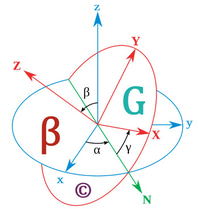The Evolution of Data Centers: Powering the Digital Future
In today’s hyper-connected world, data centers have become the backbone of modern technology. From streaming your favorite shows to enabling cloud-based collaboration tools, data centers are the invisible force driving the digital revolution. But what exactly are data centers, and how have they evolved to meet the demands of our data-driven society? Let’s dive in.
ELECTRICAL ENGINEERINGSUSTAINABILITYENERGY
Engr. Benjamin V. Gonzales Jr.
4/4/20252 min read
What is a Data Center?
A data center is a facility that houses critical IT infrastructure, including servers, storage systems, networking equipment, and power and cooling systems. These facilities are designed to store, process, and distribute vast amounts of data, ensuring that businesses and individuals can access information and services seamlessly.
The Evolution of Data Centers
Data centers have come a long way since their inception. Here’s a brief look at their evolution:
The Early Days: Mainframe Era
In the 1960s and 1970s, data centers were primarily used to house large mainframe computers. These machines were expensive, required specialized environments, and were used by governments and large corporations for critical operations.The Rise of the Internet: 1990s
With the advent of the internet, data centers began to evolve. The demand for web hosting and online services grew exponentially, leading to the development of more scalable and efficient data center designs.The Cloud Revolution: 2000s
The introduction of cloud computing transformed data centers into highly dynamic and flexible environments. Companies like Amazon Web Services (AWS), Microsoft Azure, and Google Cloud pioneered the concept of on-demand computing resources, making data centers more accessible to businesses of all sizes.Modern Data Centers: AI and Edge Computing
Today, data centers are leveraging artificial intelligence (AI) and machine learning to optimize operations, reduce energy consumption, and enhance security. Additionally, the rise of edge computing has pushed data centers closer to end-users, enabling faster processing and reduced latency for applications like IoT and autonomous vehicles.
Key Trends Shaping the Future of Data Centers
As technology continues to advance, several trends are shaping the future of data centers:
Sustainability
With growing concerns about climate change, data centers are adopting green technologies to reduce their carbon footprint. Innovations like renewable energy sources, advanced cooling systems, and energy-efficient hardware are becoming standard practices.Hyperconverged Infrastructure (HCI)
HCI combines storage, computing, and networking into a single system, simplifying data center management and improving scalability.5G and Edge Computing
The rollout of 5G networks is driving the need for edge data centers, which process data closer to the source. This reduces latency and improves performance for real-time applications.AI-Driven Automation
AI is being used to automate routine tasks, predict equipment failures, and optimize resource allocation, making data centers more efficient and reliable.
Challenges Facing Data Centers
Despite their advancements, data centers face several challenges:
Energy Consumption: Data centers consume massive amounts of energy, leading to high operational costs and environmental concerns.
Security Threats: With the increasing volume of sensitive data, data centers are prime targets for cyberattacks.
Scalability: As data demands grow, data centers must scale quickly without compromising performance or reliability.
Conclusion
Data centers are the unsung heroes of the digital age, enabling the technologies and services we rely on every day. As they continue to evolve, they will play an even more critical role in shaping the future of technology. By embracing sustainability, innovation, and automation, data centers can overcome challenges and remain at the forefront of the digital revolution.





